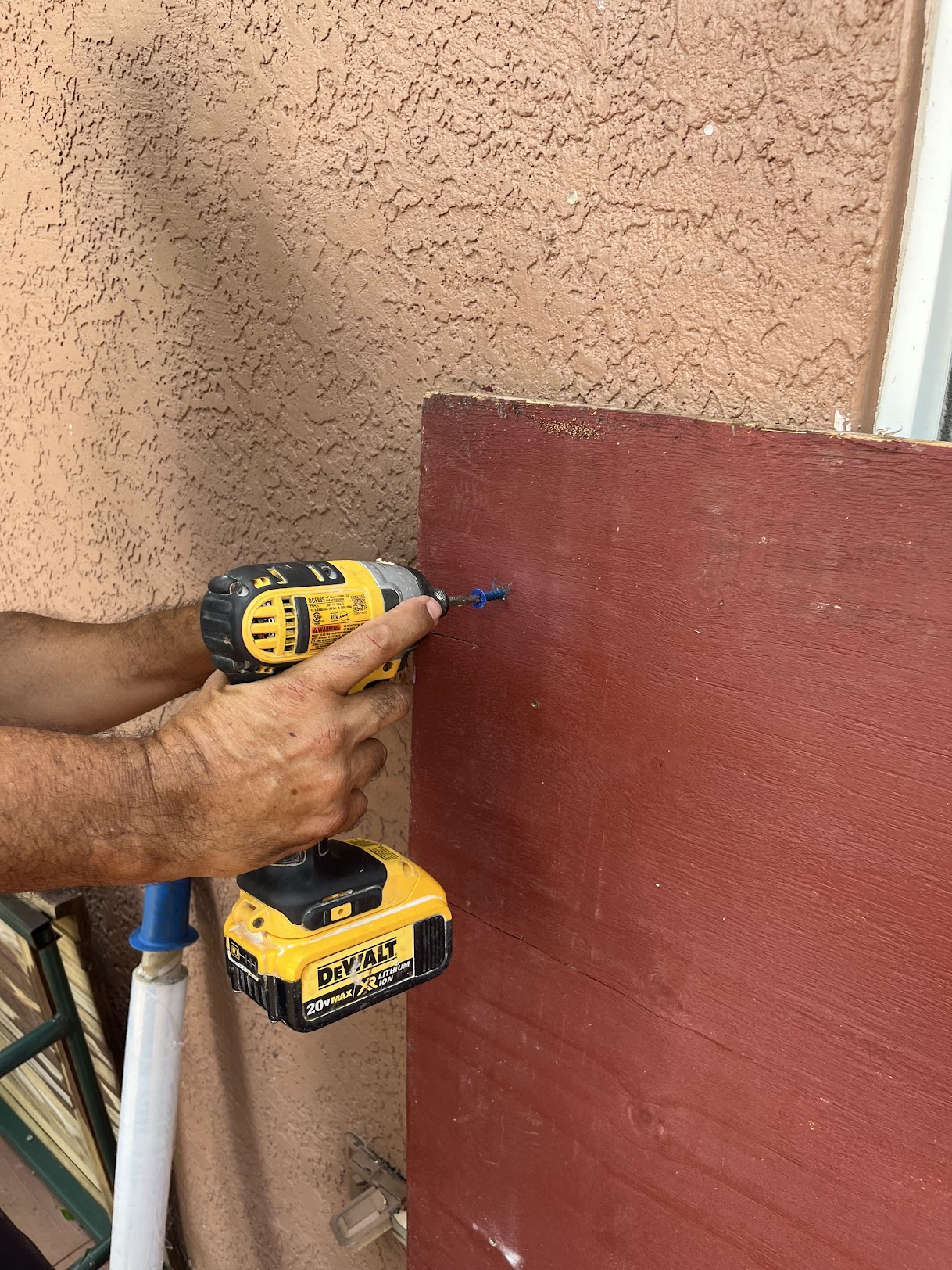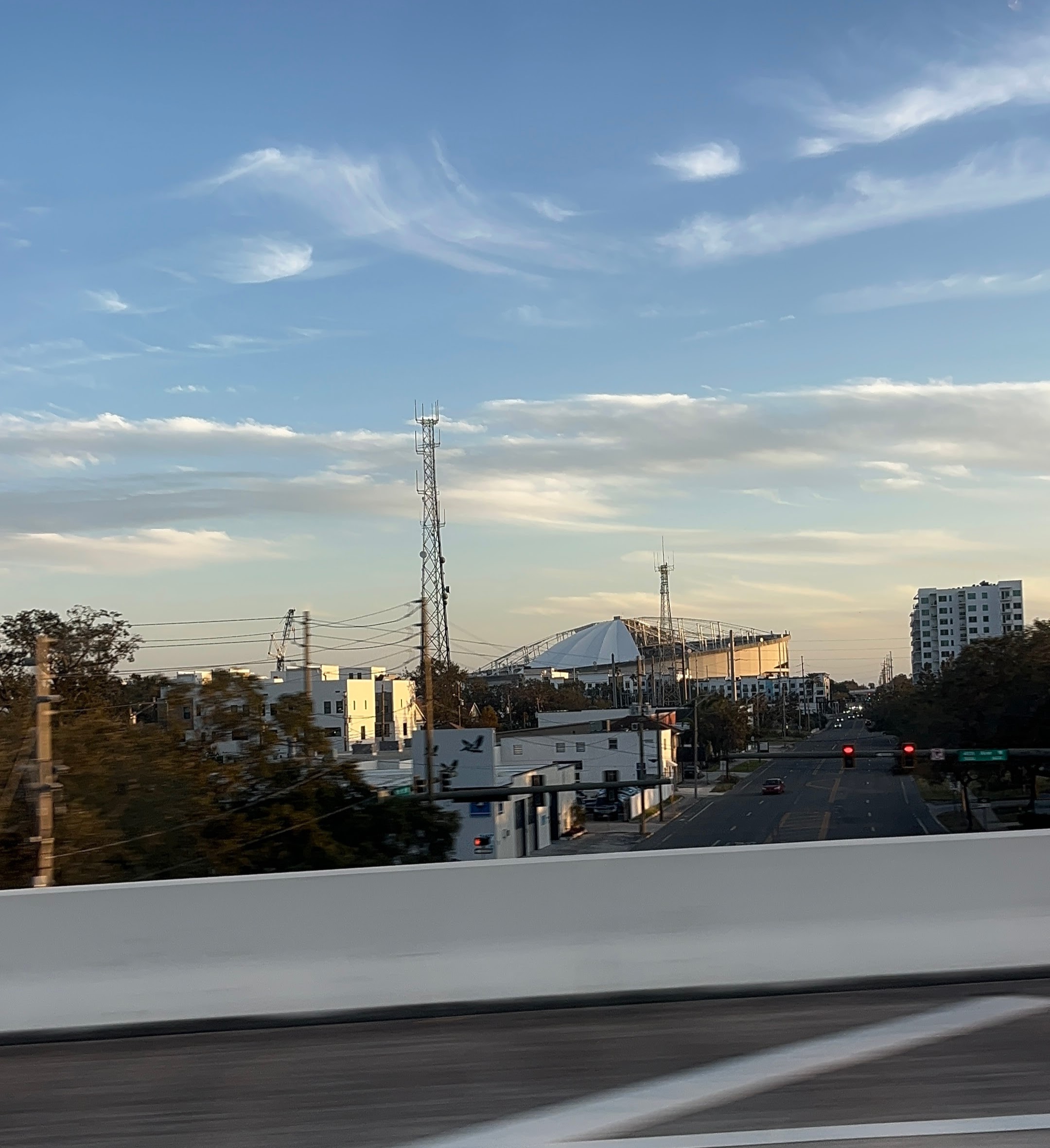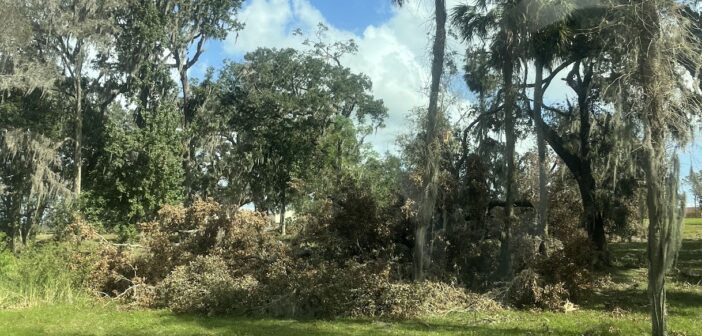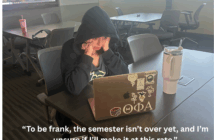By Emily Hernandez Dominguez, Managing Editor
Hurricanes have long been a formidable force in Florida’s history, impacting the state’s landscape, communities, and culture. Each hurricane tells a unique story of resilience and recovery, inspiring everything from hurricane themed cakes at Publix, to the celebrity status of Jim Cantore, a meteorologist from The Weather Channel.
In the past six years, four major hurricanes have made landfall in Florida, and Hurricane Helene was poised to become the fifth, occurring 115 days into hurricane season.
On Sept. 17, the National Hurricane Center (NHC) began monitoring the area where Helene would develop. Almost a week later, on Sept. 24, the NHC named the disturbance Tropical Storm Helene at 11 a.m. The following day, Sept. 25, Helene intensified into a hurricane at 11 a.m. as it passed through the Yucatán Channel and into the Gulf of Mexico. It made landfall as a Category 4 hurricane near Perry, Fla., at 11:10 p.m.
Helene’s rapid intensification was driven by unusually warm water in the Gulf of Mexico, which has warmed about 0.34 degrees Fahrenheit per decade since 1970–more than twice the rate of the world’s oceans overall.
The impact of Hurricane Helene was catastrophic, affecting Florida and extending to Georgia, South Carolina, North Carolina, Virginia, and Tennessee. It claimed the lives of over 230 people, making it the deadliest hurricane to strike the United States since Hurricane Maria in 2017. Estimates of the storm’s economic impact exceed $200 billion, potentially making it the costliest hurricane in U.S. history. Thousands of homes and businesses were damaged, roadways were severed, and nearly two million people were left without power.


In Florida, the storm brought winds of 140 miles per hour within one of the largest wind fields ever to impact the Southeast, along with heavy rain, storm surges, flooding, and tornadic activity. It recorded a 15-foot storm surge and catastrophic sustained winds, severely affecting neighboring states.
“[For] Helene I stayed on campus and helped residence life as part of the emergency management team,” said Paul Vitalti, a senior honors theatre major with English and art minors. “As an RA [Resident Assistant], it is important to me that my residents stay safe and get weather advisory updates as soon as possible.”
A month later, as communities continue to recover, the lasting impact of Helene is evident across the Southeast. The areas most devastated included Florida’s Gulf Coast, Georgia, and the Carolinas. Asheville, N.C., faced catastrophic flooding, and while some schools and businesses reopened, many may never resume operations.
The storm triggered 1,400 landslides, damaging over 160 water and sewer systems, at least 6,000 miles of roads, more than 1,000 bridges and culverts, and an estimated 126,000 homes, according to the North Carolina budget office. As recovery efforts continue, the resilience of these communities will be put to the test.
Following Hurricane Helene’s devastating strike on Florida’s Big Bend, Hurricane Milton made landfall two weeks later, further compounding the state’s challenges.
On the morning of Oct. 5, 2024, a tropical depression formed in the southwestern Gulf of Mexico, quickly being classified as Tropical Storm Milton. The storm intensified into Hurricane Milton by Oct. 6, and early on Oct. 7, its wind speeds surged from 90 miles per hour to 180 miles per hour in just 15 hours, according to The Weather Channel. Milton’s strength fluctuated due to an eyewall replacement cycle and wind shear, allowing it to regain Category 5 intensity on Oct.8. However, it ultimately lost some strength and made landfall as a Category 3 hurricane on Oct.9.
In light of the significant impact of Hurricane Helene, citizens began taking precautions to prepare for Milton as new information was released. This led to shortages of essential items such as bottled water, toilet paper, and non-perishable snacks.
One notable difference with Milton was its direction; it was heading toward Tampa Bay.
Tampa Bay has not been hit directly by a major hurricane since 1921, and authorities feared that this streak of good fortune may be coming to an end. While Tampa Bay experiences fewer hurricanes than other parts of the state due to its location and the typical paths of storms, many residents attribute this relative safety to a more mystical explanation.
Many Floridians believe the reason can be attributed to large burial mounds from the Tocobaga civilization still standing today, with the oldest one overlooking Old Tampa Bay. However, only a few mounds have survived the area’s modern development. Some people think the mounds could be providing supernatural protection from hurricanes.
Despite its strengths, Tampa Bay remains vulnerable to hurricanes and other natural disasters. The crescent shape of the bay, combined with hurricane intensity, can lead to significant storm surge. Additionally, the area faces the risk of compound flooding, where storm surge, heavy rainfall, and high river discharge combine to overwhelm drainage systems. Furthermore, the region’s infrastructure—such as roads and buildings—can funnel storm surge and flash flooding, making it more difficult for water to disperse effectively.
The impact of Milton, just like Helene, was catastrophic and hit close to home for many.
“I live in Orlando, about five minutes from home from MCO [Orlando International Airport],” Arianna Rodriguez, a senior majoring in political science with a legal studies minor. “The entire day it was windy and raining really hard. The power ended up going out in the middle of the night for a split second.”
During the night of the storm, Tropicana Field, home of the Tampa Bay Rays, served as a shelter for first responders and linemen when the fabric roof was ripped off. Just down the street in downtown St. Petersburg, a construction crane collapsed onto the Residences at 400 Central building construction sites, adding to the chaos. Iconic beaches like Clearwater Beach and John’s Pass were left unrecognizable due to severe flooding, with street curbs littered with debris waiting to be cleared away.
At the Saint Leo University campus, the impact was equally significant; trees and fences were toppled, forcing students, faculty, and staff to cancel classes and transition to virtual learning for a week.

“It hurts to see the damage to campus, but the timely cleanup restored my faith in the Saint Leo community,” Vitaliti states.
Preliminary damage estimates place the total cost of destruction from the storm at $85 billion, but that number keeps growing. In addition, personal costs for individuals are rising, as many people lost their homes, cars, and personal items. A string of disasters is driving up insurance costs as well.
Despite the destruction, many people expressed relief that Milton wasn’t worse. The hurricane spared Tampa a direct hit, and the lethal storm surge that scientists feared never materialized.
With hurricane season ending on Nov. 30, communities are coming together to support one another and slowly begin to rebuild, hoping that another catastrophic storm does not take form. While the National Hurricane Center is monitoring the southwest Caribbean for tropical development, it is important to remember to rely on reliable meteorology for accurate information.





